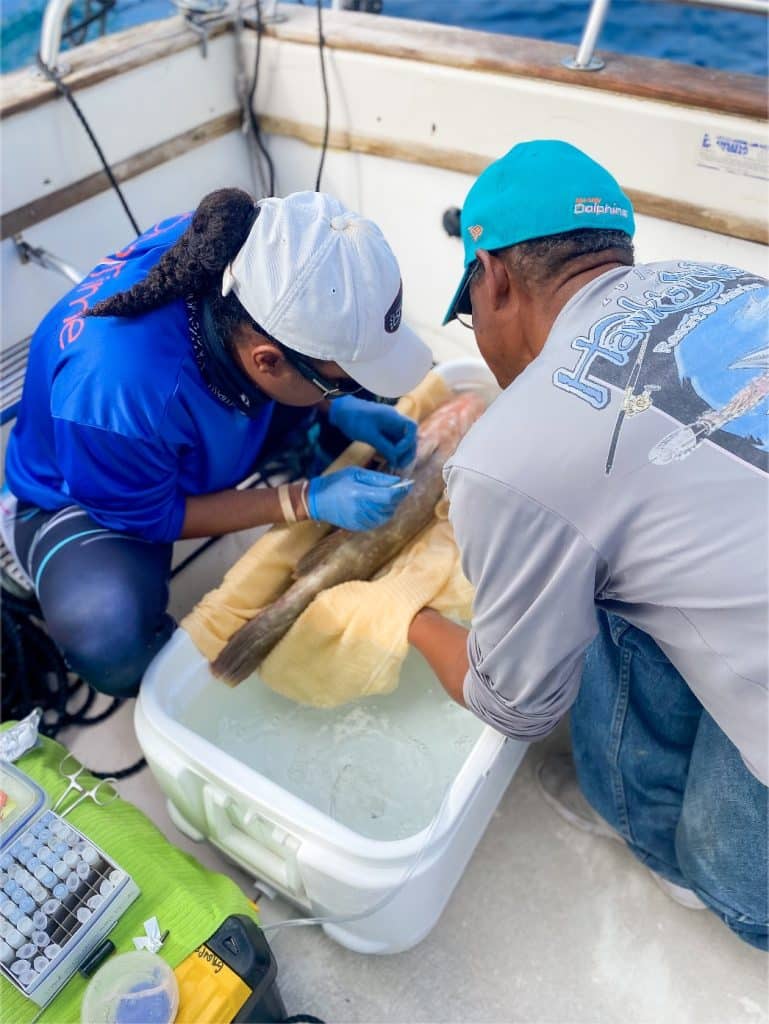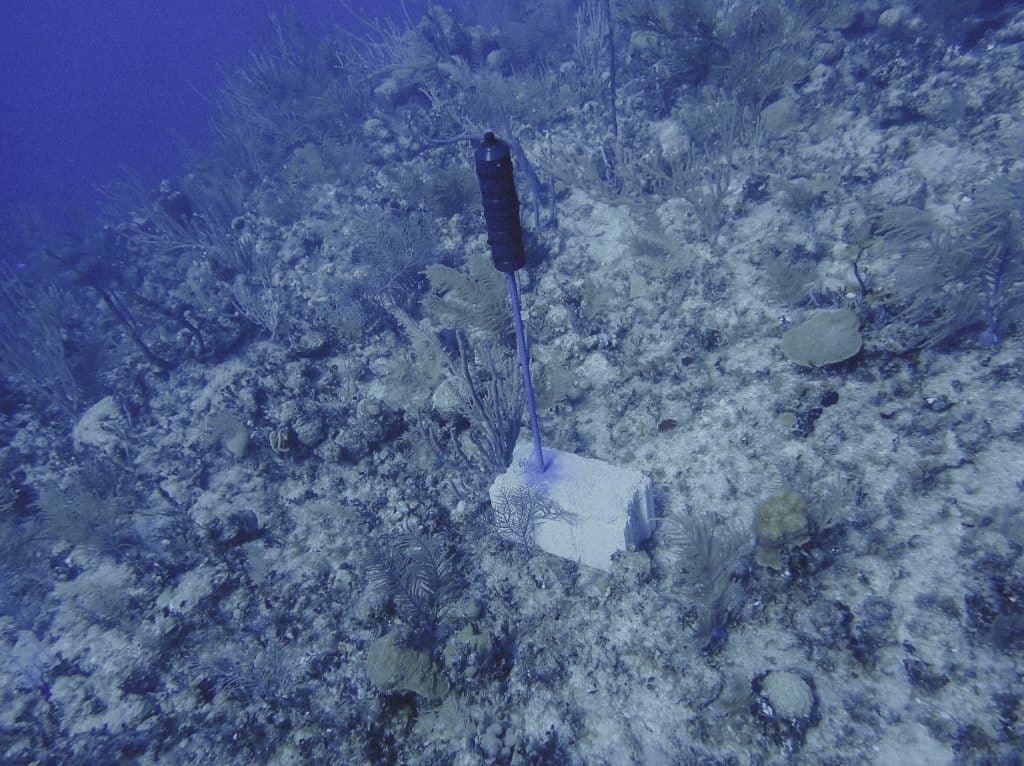Some members of the coral team got to witness a new research adventure during the month of January and joined our Fisheries Senior Scientist, Dr. Krista Sherman, for 10 days in San Salvador. While they couldn’t partake in any of the Nassau grouper research, they got a front-row seat to see the work of Dr. Sherman (when they weren’t conducting Stony Coral Tissue Loss Disease [SCTLD] assessments of course!).
The trip started with Dr. Sherman picking up receivers that were previously deployed a few years back. During this time, they met the Captain, Patterson Storr, who is a local fisherman and San Sal native. Working with fishermen like Patterson had its joys because there’s always so much to learn through old stories and different island theories/superstitions, whether it was about fishing or diving. Next was deploying traps around the lovely island of San Salvador so that they would have enough time to “soak”, enabling Dr. Sherman to catch some Nassau grouper.
After the traps were put down, Dr. Sherman deployed the receivers and everyone completed SCTLD surveys to assess the spread of the disease. Soaked traps were checked to see if any Nassau grouper were caught and if so, they were slowly brought to the surface and transferred to coolers filled with seawater on the boat. Dr. Sherman would take the length and weight of the fish and after they were anaesthetized, she conducted surgeries to place transmitters in them. The transmitters ping off of the receivers and that data will help Dr. Sherman to determine where and when Nassau grouper spawning aggregations occur around San Salvador. When the surgeries were done, and the grouper showed positive recovery signs, it was time for what Dr. Sherman referred to as the “Grouper Escort Service”. This is when she would slowly take the grouper down in a net and find a perfect little hiding place (usually a nice-sized crevice) to protect the fish from predators.

As for the SCTLD assessment portion of the trip, unfortunately, reefs around San Salvador are fully covered with this deadly coral disease. So far, San Salvador has been one of the coral team’s favourite islands to dive on, so seeing the reefs degrade because of this disease has been heartbreaking. There weren’t many brain corals on the reefs and most of the corals that were infected with SCTLD were the mountainous star coral, Orbicella faveolata, and lobed star coral, Orbicella annularis, which are intermediate susceptible species.
Overall, the trip was a great experience and start to the year. The coral team was grateful to be able to see Dr. Sherman’s research and work alongside her doing SCTLD surveys while learning a few things about Nassau grouper However, the spread of SCTLD in San Salvador showed the team just how much work has to be done and they are excited to get back into the field to treat corals while actively broadcasting SCTLD prevention measures.



